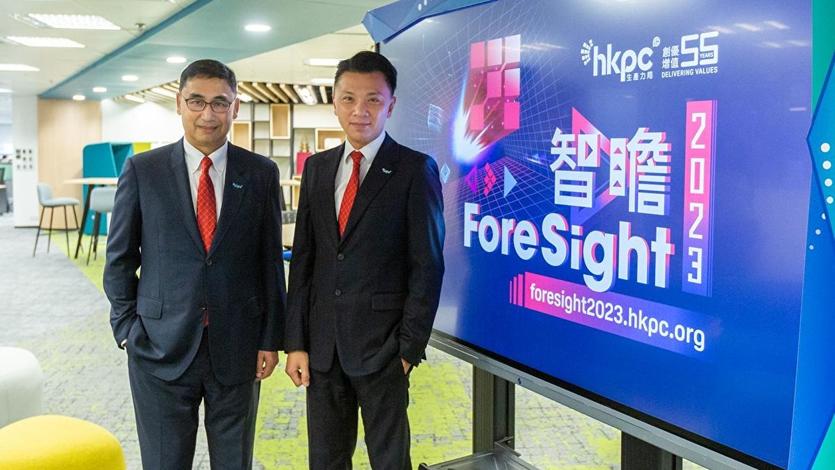 This undated file photo shows Hong Kong Productivity Council Chairman Sunny Tan (right) and Executive Director Mohamed Butt. (PHOTO PROVIDED TO CHINA DAILY)
This undated file photo shows Hong Kong Productivity Council Chairman Sunny Tan (right) and Executive Director Mohamed Butt. (PHOTO PROVIDED TO CHINA DAILY)
Attracting strategic industries to Hong Kong not only confers economic benefits to multinational companies, but also creates a business ecosystem in the city that can benefit its small and medium enterprises.
These remarks were made by Hong Kong Productivity Council Chairman Sunny Tan and Executive Director Mohamed Butt in a small-group media interview on Tuesday.
Reindustrialization will increase the cumulative number of smart production lines by four times from about 30 at present to over 130 in five years
READ MORE: Govt announces more support for Hong Kong's SMEs
Tan, a Legislative Council member representing the textiles and garment industry, said Hong Kong has niche advantages for developing light industries such as sneaker-manufacturing and clock-manufacturing, innovative technologies such as robotics, as well as some high-technology segments such as life sciences, pharmaceuticals, biochemical and food technologies.
“Magnate industry players around the globe are the business clients of Hong Kong-based manufacturers. If these enterprises relocate some part of their operations to Hong Kong, these manufacturers may get more business opportunities when they can contact their clients directly here. This will bestow benefits to the city’s SMEs,” said Tan, who was appointed HKPC chair in June.
He noted that progress in attracting strategic industries to Hong Kong is still in its preliminary stages as multinational companies conduct business planning from a global perspective.
READ MORE: Global confidence in HK grows despite the naysayers' narrative
“The Hong Kong SAR government needs to formulate policies and provide business packages that can be satisfactory for magnate enterprises if they relocate some part of their business to Hong Kong. Enterprises want business packages provided by the government that can help them explore the consumer market of the Guangdong-Hong Kong-Macao Greater Bay Area,” Tan said.
READ MORE: One year on, HK, Macao benefit steadily from Greater Bay Area
In Chief Executive John Lee Ka-chiu’s maiden Policy Address in October, the Hong Kong Special Administrative Region pledged to establish the Office for Attracting Strategic Enterprises (OASES), led by the financial secretary, to attract global enterprises by offering them special facilitation measures and one-stop services.
“In the process of attracting strategic industry players, the government should make sure that these enterprises which relocate some parts of their operations to Hong Kong should have sustainable business plans that can elevate their competitiveness,” Butt said.
The HKPC executive director added that business leaders in the city should leverage their respective business networks to lure global strategic industry players to consider expanding into Hong Kong.
Besides OASES, the administration is also pushing ahead with its reindustrialization drive. It will subsidize the setting up of more smart production lines in Hong Kong under the Reindustrialization Funding Scheme, with the target of increasing the cumulative number of smart production lines by four times from about 30 at present to over 130 in five years.
READ MORE: Smart thinking, smart technology required to reindustrialize HKSAR
“Among those current 30 smart production lines, 40 percent are for the food catering industry, 30 percent for healthcare technologies, and 30 percent for the green and construction technologies,” Butt said.
“For the 130 smart production lines in the future, HKPC will provide technology consultations while enterprises will have the business acumen to decide the focus of the smart production lines.”
Butt agreed the Northern Metropolis area should provide space to accommodate production facilities to hasten the process of reindustrialization in Hong Kong.
“Being proximate to the Greater Bay Area, setting up smart production facilities in the Northern Metropolis area is feasible. These facilities in the area should cater to industries which require less land input, have a strong technological component, and can generate high value-added returns,” Butt said.
For inspiring more in-depth analysis and exchange in the global economic outlook and technology trends, HKPC will launch ForeSight 2023 on Dec 2, bringing government and business leaders, industry heavyweights and technology experts together.


